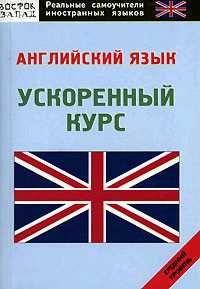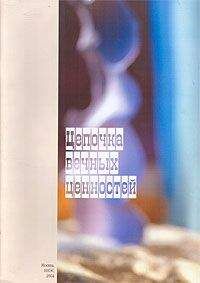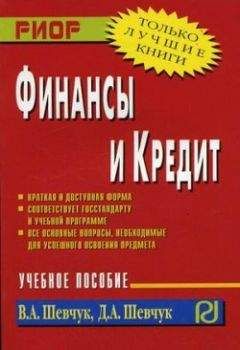Shop-assistant: Try this on.
Julia: It’s too small.
Shop-assistant: Try on this one. It’s your size.
Julia: I don’t like the colour.
Shop-assistant: What about this one?
Julia: It’s my size. But it isn’t long enough. I prefer longer coats.
Shop-assistant: Well, I see. And this one? This is your size, and it’s longer than the black one. Would you like to try it on?
Julia: Yes, it looks nice. And I like the colour.
Shop-assistant: Well, what do you think?
Julia: I like it. But it’s the most expensive coat in your shop.
Shop-assistant: Yes, but it’s the best one.
6. Read this text.
Прочитайте текст.
Patsy Seddon’s shop
Patsy Seddon has several women’s clothes shops. She works in contact with the buyer, a woman who helps her to buy clothes for all her shops. They are going to tell us about the clothes they choose for their customers.
They sell the basic things, like trousers and skirts and shirts and jumpers, and jackets. And women will also be able to buy the accessories that go with these clothes. These accessories are: shoes, bags, gloves, hats, scarves, belts – everything you might need to go with your outfit.
Patsy Seddon and her buyer choose the clothes for their shops in the wholesale fashion shops. They choose the clothes which they like themselves.
Every season has the colour. It is the key to wearing the right clothes. Actually, colour is one of the most important points. This year, for example, pale green and pink are popular.
Clothes excite women. They are desperate to buy them and wear them because they think they are going to look good in them. That’s the key thing: they want to look flattering and feel good.
A. Retell the text.
Перескажитетекст.
B. Ask five questions about the text.
Задайте пять вопросов к тексту.
C. Answer the questions.
Ответьте на вопросы.
1. What’s Patsy’s job?
2. What does her job include?
3. Does she work alone?
4. What clothes do they sell?
5. What accessories do they sell?
6. Where do they buy these clothes?
7. Why is the colour very important?
8. Why are women desperate to buy clothes?
PART 1
Choose the correct word.
Выберите подходящее слово.
PART 2
Match the sentences with their translations.
Найдите подходящий перевод.
PART 3
Find one mistake in each sentence.
Найдите ошибку в каждом предложении.
LESSON 5. The rules of the road
1. Answer the questions about yourself.
Напишите ответы на вопросы о себе.
1. How do you get to work?
2. How often do you drive? Do you like it? Why?
3. Which roads are dangerous in your town?
4. Do you fix your car yourself?
5. How often do you have problems with your car?
6. Do you sometimes come into contact with policemen? When and why does it happen?
7. Do you know what your car consists of (what parts)?
8. When did you learn to drive?
9. Who looks after your car?
10. Would you like to buy a bigger/nicer/faster/smaller/more flattering car? Which model?
2. Read the answers. Write the possible questions.
Прочитайте ответы. Напишите возможные вопросы к ним.
3. Write 10 sentences using the adjectives in the Box. Use the structures: as…as, not so…as, too…, …enough, degrees of comparison.
Напишите 10 предложений, используя приведенные прилагательные. Используйте структуры: as…as, not so…as, too…, …enough, а также степени сравнения прилагательных.
Casual, flattering, warm, pleasant, boring, delicious, vocational, difficult, specific, fluent
4. Make up sentences about your family and friends. Use the words given.
Составьте предложения, описывающие вашу семью и друзей. Используйте данные слова.
Example: My friend Tony can fix his car himself.
I myself
My wife herself
My children themselves
My wife and I ourselves
My wife’s mother herself
My friend Alex himself
FOCUS ON VOCABULARY
Активный словарь
1. crossing – перекресток, переход
2. danger – опасность
Out of danger – вне опасности
3. entry – вход
no entry – вход запрещен
4. motorway – шоссе
5. bend – поворот, изгиб дороги
bend ahead – впереди поворот
6. advice – совет (всегда в ед.ч.)
Many pieces of advice – много советов (много кусочков совета)
To follow someone’s advice – следовать чьему-либо совету
7. pedal cyclist – велосипедист
8. extent – степень
to what extent – до какой степени, насколько
9. injury – ранение, травма
The extent of his injury – степень тяжести его ранения
10. learner – учащийся, ученик
11. motorcycle – мотоцикл
12. shift – смена
to work in shifts – работать посменно
13. pedestrian – пешеход
14. pedestrian crossing – пешеходный переход
15. flow – поток, течение
the flow of traffic/transport – поток транспорта
16. movement – движение
17. accident – несчастный случай, авария
Adjectives1. dangerous – опасный
2. safe – безопасный
3. ready – готовый
I’m ready – Я готов.
4. numerous – многочисленный, многообразный
Numerous peoples – многочисленные народы
5. average – средний, усредненный
6. clear – понятный, ясный
Is it clear? – Это понятно?
7. wrong – неверный, неправильный
There is something wrong with your car. – Ваша машина не в порядке.
8. correct – верный, правильный
Verbs1. to overtake – обгонять
No overtaking – Обгон запрещен
2. to cross – пересекать, переходить
to cross the road – переходить дорогу
3. to move – передвигать(ся)
4. to advise – советовать
He advised me to stop smoking. – Он посоветовал мне бросить курить.
5. to allow – разрешать, позволять
He allowed me to come in. – Он разрешил мне войти.
6. to clear – расчищать
to clear the road – расчистить дорогу
7. to flow – течь (о реке, транспорте)
The river flows fast. – Река течет быстро.
8. to hire – нанимать (на работу)
He hired two workers.
9. to vary – разнообразить
varied – разнообразный
10. to reduce – уменьшить(ся)
To reduce speed – сбавить скорость
11. to increase – увеличивать(ся)
12. to fill in – заполнить
to fill in a form – заполнить анкету
13. to deal with – общаться, иметь дело с
I deal with different people.
Word Combinations1. agricultural vehicles – сельскохозяйственный транспорт
2. cater for people – обслуживать людей
3. cc – cubic centimeter – кубический сантиметр
4. numerous walks of life – многообразные профессии (дороги жизни)
5. on average – в среднем
6. to give way – уступить дорогу
7. road signs – дорожные знаки
1. Fill in the gaps.
Заполните таблицу.
2. Match the two halves of the words.
Найдите вторую половину слова.
3. Make sentences with the two words given.
Составьте предложения, используя данные слова.
4. Translate into English.
Переведите на английский язык.
Language focus 1
Places in town
Что есть в городе
5. Draw a mini-plan of your town/part of the town. Mark different places on the map.
Нарисуйте схематично план Вашего города/части города. Отметьте на карте, что где находится.
6. Say and write how you can get to different places in your town and how long it takes.
Скажите и напишите, как можно добраться до разных мест в Вашем городе и сколько времени это займет.
1. You can get to The Central Circus by bus 12. There are three stops from here. It will take you/it takes about ten minutes.
2. (park)……………………………………………………………………………………………
…………………………………………………………………………………………………….
3. (supermarket)…………………………………………………………………………………..
…………………………………………………………………………………………………….
4. (museum)……………………………………………………………………………………….
…………………………………………………………………………………………………….
5. (hospital)……………………………………………………………………………………….
…………………………………………………………………………………………………….
6. (parking area)……………………………………………………………………………………
……………………………………………………………………………………………………..
7. Answer the questions.
Ответьте на вопросы.
1. What are the sport facilities in your town?
2. How can I get to the nearest gym?
3. How long does it take to get to the nearest town?
4. Is there Underground in your town?
5. How can I get to the town centre?
6. What is there in the town centre?
7. How long will it take to get to Moscow from your town? How can you get there?
8. Which is the best book shop in your town? How can I get to it?
9. How far is the hotel in your town from the place where you live? How can you get to it?
10. Which is the best cinema in your town? How can I get to it?
Language focus 2
Road signs
Дорожные знаки
8. Match the sentences to the road signs.
Соотнесите предложения с дорожными знаками по их описанию.
1. It means you have to stop or give way.
2. It means you can’t park here.
3. It means you can’t move fast.
4. It means you can’t drive into this street.
5. It means you have to turn right.
6. It means there’s a school ahead.
7. It means you can’t overtake on this piece of road.
8. It means you have to give way to pedestrians.
9. Say what you have to do if you see these signs.
Укажите, что вы должны сделать, если увидите следующие знаки (Вы – водитель).
1. Bend ahead.
2. School ahead.
3. No overtaking.
4. Traffic lights.
5. No parking.
6. Reduce speed.
7. End of motorway.
8. T-junction.
9. Petrol station.
10. Pedestrian crossing.
10. Complete the sentences.
Дополнитепредложения.
1. It means you can’t ……………..the road. You have to wait.
2. It means you have to stop or……………..way.
3. It means you have to……………..right.
4. It means you can’t……………….your car here.
5. It means you have to……………speed.
6. It means you have to…………….slowly.
7. There is…………..light ahead.
8. You can’t……………..on this piece of road.
9. There is a ………………crossing ahead.
10. If you see a sign «No…………….», it means you can’t drive there.
FOCUS ON GRAMMAR
Активная грамматика
Language focus 1
Modal verbs





